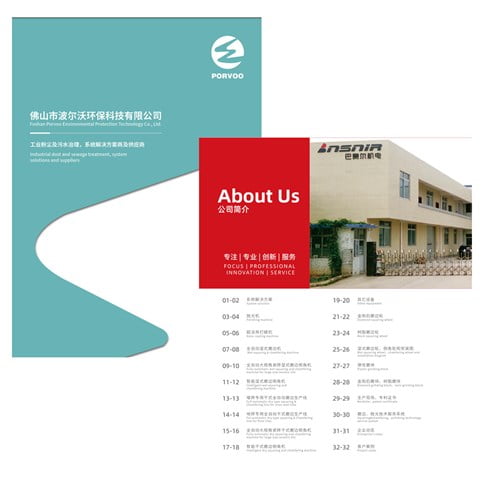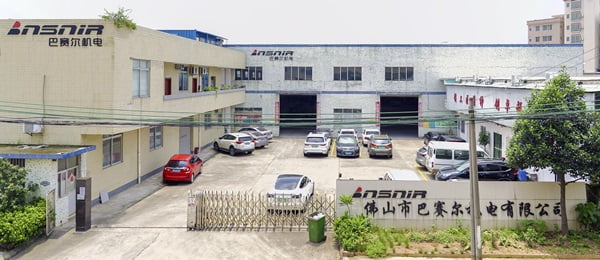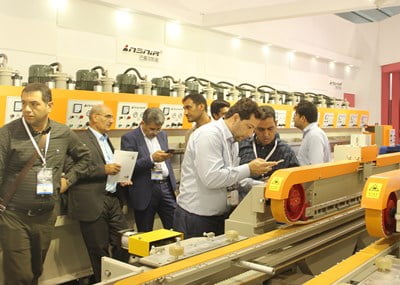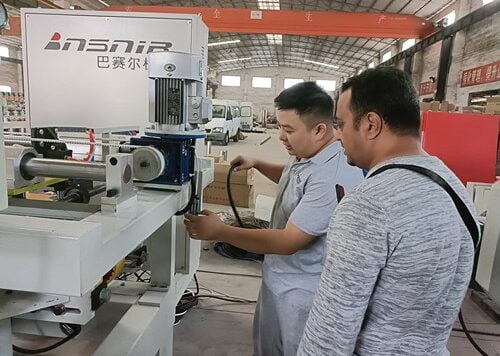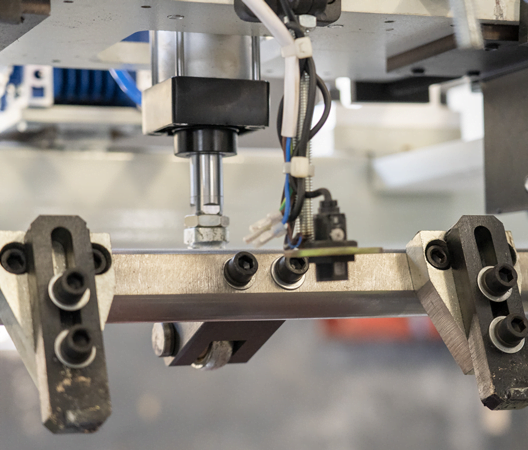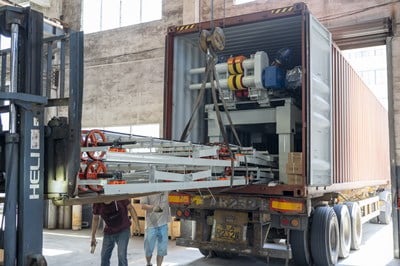Problem: Ceramic tile manufacturers face mounting pressure to deliver flawless surface finishes while maintaining competitive production speeds and costs. Traditional manual polishing methods can no longer meet the demands of modern tile manufacturing, where even microscopic imperfections can result in product rejection and significant financial losses.
Agitate: Without proper polishing line automation, manufacturers struggle with inconsistent surface quality, excessive labor costs, and production bottlenecks that can reduce output by up to 40%. These inefficiencies not only impact profitability but also jeopardize long-term market competitiveness in an increasingly demanding industry.
Solution: This comprehensive guide explores how advanced tile polishing machines revolutionize ceramic tile production, offering detailed insights into equipment selection, technical specifications, and optimization strategies that leading manufacturers use to achieve superior surface finishes while maximizing operational efficiency.
BASAIR Tech has been at the forefront of developing innovative polishing solutions that address these critical manufacturing challenges, helping facilities worldwide achieve consistent, high-quality results.
What Are Ceramic Tile Line Polishing Machines?
Tile polishing machines represent sophisticated industrial equipment designed specifically for automated surface finishing in ceramic tile production lines. These systems combine mechanical precision with advanced control technology to achieve uniform surface treatments across thousands of tiles per hour.
Core Components and Functionality
The fundamental architecture of modern polishing machines consists of several integrated subsystems working in synchronized harmony. The primary polishing head assembly contains multiple rotating discs equipped with diamond or silicon carbide abrasives, operating at speeds ranging from 300 to 1,500 RPM depending on tile specifications and desired finish quality.
Conveyor systems transport tiles through sequential polishing stations, with each station configured for specific grit levels progressing from coarse (120-grit) to ultra-fine (1200-grit) depending on final surface requirements. Advanced models incorporate real-time pressure monitoring systems that automatically adjust contact force based on tile thickness variations, ensuring consistent results across different product lines.
Water circulation systems provide continuous cooling and debris removal during the polishing process, with filtration capacities typically ranging from 500 to 2,000 gallons per minute depending on production volume requirements.
| Component | Specification Range | Primary Function |
|---|---|---|
| Polishing Heads | 4-12 stations | Surface finishing |
| Motor Power | 15-75 HP per head | Drive system |
| Conveyor Speed | 2-15 meters/minute | Material transport |
| Water Flow | 500-2000 GPM | Cooling and cleaning |
Types of Polishing Systems
Ceramic tile production facilities typically deploy one of three primary polishing system configurations based on their specific operational requirements and product portfolios.
Single-line systems handle production volumes up to 5,000 square meters per day and are ideal for smaller manufacturers focusing on specialty or premium tile products. These systems offer exceptional flexibility for frequent product changeovers but require higher per-unit labor costs.
Multi-line parallel systems increase capacity to 15,000-25,000 square meters daily by operating multiple polishing lines simultaneously. This configuration provides excellent redundancy – if one line requires maintenance, production continues on remaining lines, minimizing costly downtime.
Continuous loop systems represent the pinnacle of polishing automation, capable of processing over 30,000 square meters daily with minimal human intervention. These systems integrate advanced robotics for tile loading and quality inspection, achieving consistency levels impossible with manual operations.
How Do Tile Polishing Machines Transform Manufacturing?
Modern polishing equipment fundamentally restructures ceramic tile production workflows, shifting from labor-intensive batch processing to streamlined continuous manufacturing that dramatically improves both quality consistency and operational efficiency.
Production Line Integration
Successful polishing line integration requires careful coordination between upstream forming processes and downstream finishing operations. Leading manufacturers position polishing stations immediately after initial drying cycles, when tiles retain optimal moisture content for effective surface treatment.
Automated feeding systems eliminate manual tile handling, reducing breakage rates from 3-5% to less than 0.5% while maintaining consistent processing speeds. Quality control sensors positioned before polishing stations automatically reject tiles with dimensional deviations or surface defects, preventing equipment damage and ensuring uniform results.
In our experience working with mid-scale manufacturers, proper integration can increase overall production efficiency by 35-50% within the first six months of implementation. A tile manufacturer in Italy recently reported processing time reductions from 12 minutes per tile to 4.5 minutes after installing automated polishing equipment.
Buffer zones between polishing and subsequent processing stages accommodate natural speed variations while maintaining steady material flow throughout the entire production line.
Quality Enhancement Capabilities
Advanced polishing systems deliver surface finish consistency that manual processes simply cannot achieve. Automated pressure control maintains contact forces within ±2% tolerance, eliminating the human variability that creates visible polish inconsistencies across tile batches.
Multi-stage abrasive progression produces mirror-like finishes with surface roughness values consistently below 0.2 micrometers Ra, meeting the highest architectural specification requirements. Digital feedback systems monitor surface quality in real-time, automatically adjusting polishing parameters when deviations exceed predetermined thresholds.
Statistical process control data from a large-scale facility in Spain shows that automated polishing reduced surface quality variation by 78% compared to manual methods, while simultaneously increasing production throughput by 42%.
What Technical Specifications Matter Most?
Selecting appropriate polishing equipment requires understanding how key technical parameters directly impact production capabilities, operating costs, and final product quality in your specific manufacturing environment.
Motor Power and Speed Control
Motor specifications represent the foundation of polishing performance, with power requirements varying significantly based on tile hardness, size, and desired surface finish characteristics. Industrial machinery for ceramic applications typically requires 15-30 HP per polishing head for standard porcelain tiles, while ultra-hard technical ceramics may demand 45-75 HP per station.
Variable frequency drives (VFD) enable precise speed control essential for different tile types and surface treatments. Natural stone-look tiles require slower speeds (300-500 RPM) to prevent surface cracking, while glossy porcelain finishes benefit from higher speeds (800-1200 RPM) that generate optimal heat for surface densification.
According to industry research conducted by the Ceramic Tile Institute, optimal motor sizing should provide 20-25% excess capacity beyond calculated requirements to accommodate material variations and future production increases without performance degradation.
| Tile Type | Motor Power (HP) | Optimal Speed (RPM) | Production Rate |
|---|---|---|---|
| Standard Porcelain | 20-25 | 600-800 | 12-15 m²/min |
| Technical Ceramic | 45-60 | 400-600 | 8-10 m²/min |
| Natural Stone Effect | 15-20 | 300-500 | 6-8 m²/min |
Abrasive Systems and Material Handling
Abrasive selection dramatically influences both surface quality and operating costs, with diamond-based systems offering superior longevity despite higher initial investment. Premium diamond abrasives typically provide 3-4 times longer service life than silicon carbide alternatives, reducing material costs and minimizing production interruptions for abrasive changes.
Progressive grit sequences optimize finishing efficiency while minimizing processing time. Industry best practice establishes 4-6 polishing stages with grit ratios of approximately 2:1 between successive stages (example: 120→240→480→800→1200 grit progression for high-gloss finishes).
Pneumatic pressure systems provide precise contact force control essential for consistent results across varying tile thicknesses. Optimal pressure ranges typically span 0.5-2.0 bar depending on tile hardness and target surface finish, with automatic adjustment capabilities maintaining consistency despite material variations.
How to Select the Right Polishing Equipment?
Equipment selection success depends on accurately matching system capabilities with your specific production requirements, quality standards, and long-term business objectives while considering total cost of ownership rather than initial purchase price alone.
Production Capacity Requirements
Capacity planning must account for peak production demands, product mix variability, and planned growth trajectories over the equipment’s 15-20 year service life. Tile polishing machines should be sized to handle 120-130% of current peak production to accommodate seasonal fluctuations and market growth.
Production speed calculations must incorporate setup times, changeover requirements, and planned maintenance windows. A facility producing 8,000 square meters daily with 85% equipment availability requires nominal capacity of approximately 11,000 square meters to maintain production schedules.
It’s worth noting that oversizing equipment by more than 40% often proves economically inefficient due to higher energy consumption and maintenance costs relative to production benefits. The optimal approach involves modular systems that allow capacity expansion through additional polishing stations as demand grows.
Budget and ROI Considerations
Capital investment for quality polishing systems ranges from $150,000 for basic single-line configurations to over $1,200,000 for fully automated multi-line installations with integrated quality control and material handling systems.
Financial analysis should include labor cost reductions, quality improvement benefits, and energy efficiency gains alongside equipment costs. Leading manufacturers typically achieve ROI within 18-36 months through combination of reduced labor requirements (typically 2-4 positions per line), decreased waste rates, and premium pricing for improved surface quality.
Consider exploring advanced polishing line solutions that offer comprehensive automation packages designed to maximize operational efficiency while minimizing total ownership costs.
Financing options including equipment leasing and performance-based contracts can reduce initial capital requirements while providing access to latest technology developments and ongoing technical support services.
What Are the Key Benefits and Limitations?
Understanding both advantages and constraints of automated polishing systems enables realistic expectations and optimal implementation strategies that maximize return on investment while addressing potential operational challenges.
Operational Advantages
Consistency represents the most significant benefit of automated polishing systems, with surface finish variations reduced to less than 2% compared to 15-20% typical of manual processes. This consistency enables premium pricing strategies and access to high-specification architectural projects requiring exceptional surface uniformity.
Labor efficiency improvements typically range from 60-80%, with one operator managing entire automated lines previously requiring 4-6 workers. These reductions significantly improve labor cost competitiveness while reducing dependence on skilled polishing specialists who are increasingly difficult to recruit and retain.
Energy efficiency gains of 25-35% result from optimized motor control systems and precise pressure management that eliminate energy waste common in manual operations. Modern systems also achieve 90-95% water recycling rates, reducing both consumption and waste treatment costs.
As industry expert Marco Benedetti from the Italian Ceramic Society points out, “Automated polishing systems have fundamentally changed the economics of ceramic production, enabling smaller manufacturers to compete with large-scale operations through superior efficiency and quality consistency.”
Common Challenges and Solutions
Initial capital investment represents the primary barrier for many manufacturers, particularly smaller operations with limited access to capital financing. While equipment costs are substantial, phased implementation strategies allow gradual automation adoption that spreads investment over multiple budget cycles.
Maintenance complexity increases with automation sophistication, requiring enhanced technical skills and spare parts inventory management. However, predictive maintenance systems now standard on quality equipment reduce unplanned downtime by 40-60% while optimizing service scheduling around production demands.
Setup complexity for product changeovers initially challenges operators accustomed to manual processes, but modern systems incorporate preset programs for common tile types that reduce changeover time from hours to minutes once operators gain experience.
| Challenge | Impact Level | Typical Solution Timeline |
|---|---|---|
| Capital Investment | High | 12-36 months (financing) |
| Maintenance Training | Medium | 3-6 months (skill development) |
| Changeover Complexity | Low | 1-3 months (operator training) |
How Do Leading Manufacturers Optimize Performance?
Industry leaders achieve superior results through systematic approaches to equipment optimization, preventive maintenance, and continuous process improvement that maximize both equipment longevity and production efficiency.
Industry Best Practices
Predictive maintenance programs utilize vibration analysis, thermal monitoring, and lubricant analysis to identify potential issues weeks before failure occurs. This proactive approach reduces emergency repair costs by 70-80% while maintaining consistent production schedules essential for customer satisfaction.
Process optimization involves systematic testing of polishing parameters for each product line to achieve optimal balance between surface quality, processing speed, and abrasive consumption. Leading facilities maintain detailed parameter databases that enable rapid setup optimization when introducing new products or adjusting existing specifications.
A major European tile manufacturer recently implemented comprehensive optimization protocols that increased overall equipment effectiveness (OEE) from 68% to 89% within twelve months, primarily through reduced changeover times and improved maintenance scheduling.
Regular calibration schedules ensure consistent pressure application and speed control across all polishing stations, preventing quality variations that can develop gradually over time. Monthly calibration checks maintain processing consistency within ±1% of target parameters.
Maintenance and Efficiency Strategies
Spare parts inventory management balances carrying costs against downtime risks through statistical analysis of component failure patterns and lead times. Critical components with long replacement lead times typically maintain 2-3 units in inventory, while standard items with short lead times operate on just-in-time replenishment.
According to a 2023 study by Manufacturing Technology Institute, facilities implementing structured maintenance programs achieve 92-96% equipment availability compared to 75-85% for reactive maintenance approaches, directly translating to 15-20% higher effective production capacity.
Operator training programs emphasizing both equipment operation and basic troubleshooting enable faster response to minor issues while building institutional knowledge essential for long-term success. Cross-training multiple operators on each system provides operational flexibility essential for shift scheduling and vacation coverage.
Energy optimization through motor control programming and compressed air management typically reduces operating costs by 20-30% while extending equipment life through reduced mechanical stress. Premium ceramic tile production equipment incorporates these optimization features as standard capabilities.
Conclusion
Ceramic tile line polishing machines represent transformative technology that enables manufacturers to achieve unprecedented surface quality consistency while dramatically improving operational efficiency and reducing labor dependencies. The integration of advanced automation, precise control systems, and predictive maintenance capabilities positions these systems as essential infrastructure for competitive ceramic tile production.
Key value propositions include 35-50% efficiency improvements, 78% reduction in surface quality variation, and ROI achievement within 18-36 months through combined labor savings, quality improvements, and waste reduction. Technical considerations around motor power, abrasive systems, and capacity planning directly influence long-term success and operational costs.
While initial capital investment and maintenance complexity present challenges, proven implementation strategies and financing options enable successful adoption across manufacturers of all sizes. Leading facilities consistently achieve 89%+ equipment effectiveness through systematic optimization and preventive maintenance approaches.
For manufacturers evaluating polishing automation, consider starting with comprehensive needs assessment, facility evaluation, and professional consultation on advanced polishing solutions that align with your specific production requirements and growth objectives.
The ceramic tile industry continues evolving toward higher automation levels and enhanced quality standards. Manufacturers investing in proven polishing technology today position themselves advantageously for future market demands while building operational capabilities essential for long-term competitive success.
What specific surface quality requirements or production challenges is your facility currently facing that automated polishing systems might address?
Frequently Asked Questions
Q: What are the primary functions of ceramic tile line polishing machines?
A: Ceramic tile line polishing machines are designed to enhance the appearance and durability of tiles by smoothing their surfaces and removing minor imperfections. These machines typically perform tasks such as grinding, polishing, and buffing, ensuring that the tiles have a glossy finish and are ready for installation.
Q: How do ceramic tile line polishing machines improve tile quality?
A: Ceramic tile line polishing machines improve tile quality by providing a precise and consistent polishing process. They use advanced technologies like diamond-coated polishing wheels and automated controls to ensure that tiles are polished evenly and efficiently. This results in a uniform finish that enhances the aesthetic appeal of the tiles.
Q: What types of tiles can be polished using ceramic tile line polishing machines?
A: Ceramic tile line polishing machines are versatile and can polish a variety of tiles, including porcelain, ceramic, and natural stone tiles. They are particularly effective for polishing large quantities of tiles in manufacturing settings but can also be used for smaller batches in renovation projects.
Q: What are the benefits of using advanced polishing machines in ceramic tile production?
A: The benefits of using advanced polishing machines in ceramic tile production include increased efficiency, improved quality, and reduced labor costs. These machines also help in maintaining consistency in the finish, which is crucial for meeting high customer expectations. Additionally, they can operate in both wet and dry conditions, offering flexibility in different production environments.
Q: How important is machine maintenance for ceramic tile line polishing machines?
A: Machine maintenance is crucial for ceramic tile line polishing machines to ensure they continue operating efficiently. Regular maintenance involves cleaning the machine, checking for wear on polishing wheels, and performing routine calibrations. This helps prevent downtime and ensures that the machine consistently produces high-quality results.
Q: Can ceramic tile line polishing machines be customized for specific production needs?
A: Yes, many ceramic tile line polishing machines can be customized to meet specific production needs. Manufacturers often offer tailored solutions that include different polishing wheel sizes, variable speed controls, and customizable automation systems. This flexibility allows producers to adapt the machines to their particular production requirements and improve overall efficiency.
External Resources
- The Ultimate Guide to BASAIR’s Squaring Machine Line: Enhancing Ceramic Tile Production – This guide details the features, advantages, and operational benefits of BASAIR’s squaring and line polishing machines for ceramic tile manufacturing.
- Technical Manual for Polishing and Treatment – Sigma Diamant (PDF) – This comprehensive technical manual covers the polishing and surface treatment of ceramic tiles, including guidance on polishing machinery and line configuration.
- Line Machine Manual PDF – Basair Electro Mechanical Co., LTD – An official manual offering step-by-step instructions, safety information, and maintenance tips for Basair’s line and polishing machines used in ceramic tile production.
- Grinding and polishing machines with Operation guidance – YouTube – A video demonstrating the operation and practical features of ceramic tile line grinding and polishing machines.
- Floor rotary buffers/polishing machines – Tilers Forums – A community discussion sharing experiences and best practices for using rotary buffing and polishing machines on ceramic and porcelain tile floors.
- Ceramic Tile Polishing: Complete Guide by Tile Masters – An in-depth article explaining ceramic tile polishing processes, recommended machines, and critical tips for achieving a professional finish.

